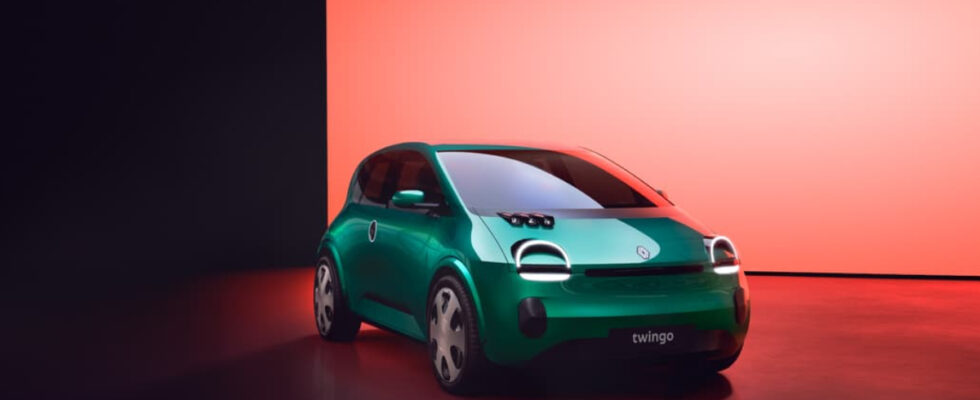We know (a little) more about the technical sheet of the Twingo Legend, the future electric version of the small city car. Better not to expect a revolutionary battery and autonomy. To maintain its very attractive price, namely less than €20,000, Renault had no other choice but to opt for solutions that were inevitably unimpressive.

A few days ago, Renault lifted the veil on the future of its legendary Twingo. Soberly named, Twingo Legend, this new model will obviously turn to electric, as required by the manufacturer’s strategy. Which makes its price its real selling point, since the latter will be below the symbolic bar of €20,000. Enough to attract a large customer base who cannot yet afford to go electric.
But, as attractive as it is, this price necessarily raises some questions. How will Renault manage to produce an electric car at such a low cost? As one might expect, the answer is to be found in the technical sheet, more precisely in the battery. Let us remember that the latter accounts for 40% on average of the production cost of an electric vehicle.
The Renault Legend will have to make do with a small battery to keep its price low
Without yet knowing its technical specifications, Renault has confirmed that the Twingo Legend will be powered by a small battery, compared to current industry standards. If we are to believe the statements of Luca de Meo, CEO of the manufacturer, we should expect a battery with a capacity of less than 50 kWh. A strategy as beneficial for the company’s margins as for the autonomy of the car.
Indeed, a small battery means a lighter weight of the vehicle, and therefore reduced consumption. Thus, in the Renault press release, we learn that the battery in the Legend range will display a consumption of 10 kWh/100 kilometers. According to Argus, the Twingo Legend would not exceed 400 km of autonomy. Furthermore, the specialized media announces that the car will benefit from a “deflated” version of the Renault 5 E-Tech.
On the same subject — Renault offers the Twingo E-Tech at €100 per month, good deal or not?
The final point of the manufacturer’s strategy to reduce costs, the battery will not be based on traditional NMC technology, but rather on LFP, for lithium/iron/phosphate. Less expensive, this option is also less efficient, since it has a lower density. Translation: at the same weight as an NMC, the autonomy is lower. We will have understood, the city car will have to remain, precisely, a city car to be really interesting.


Once it has to make longer journeys, the Twingo Legend will quickly find itself more limited and less interesting. Renault has therefore very clearly chosen to target city dwellers first and foremost, who will not have to recharge their vehicle every day. The manufacturer is not mistaken in praising the merits of its battery from an ecological perspective.
Indeed, in its press release, it indicates that in addition to reduced consumption, its small battery will allow “CO₂ emissions reduced by 75% compared to the average of thermal vehicles sold in Europe in 2023 over the entire life cycle, zero CO₂ exhaust emissions and less consumption of raw materials thanks to its size compact”. Here again, arguments not to be overlooked, in addition to the price.
Source: L’Argus
